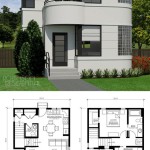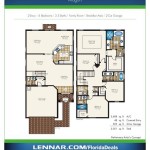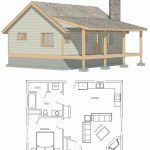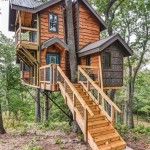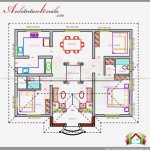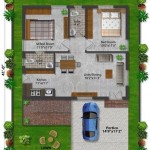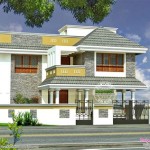One Level Ranch Style House Plans: A Comprehensive Guide
One-level ranch style house plans represent a significant segment of the residential housing market, prized for their accessibility, simplicity, and adaptability. These designs, characterized by their horizontal layout and efficient use of space, offer a compelling option for a wide range of homeowners, from young families to retirees. Understanding the nuances of ranch style homes, including their historical roots, key features, and contemporary adaptations, is crucial for anyone considering building or purchasing one.
The term "ranch" encompasses a variety of architectural styles, but the unifying characteristic is the single-story design. This architectural style emerged in the United States in the 1930s, drawing inspiration from Southwestern architecture and the informal lifestyle of the American West. The original ranch homes were designed to be functional and affordable, reflecting the post-Depression era's emphasis on practicality. Over time, ranch styles evolved, incorporating elements from other architectural movements and adapting to different regional climates and aesthetic preferences.
One-level ranch style house plans offer several advantages. The absence of stairs makes them particularly appealing for individuals with mobility issues or families with young children. The open floor plans often found in ranch homes promote a sense of spaciousness and facilitate interaction between family members. Moreover, the streamlined design simplifies maintenance and cleaning. These plans lend themselves well to aging-in-place strategies, ensuring comfort and accessibility for homeowners as they grow older. The ease of access to the outdoors is another significant benefit, often incorporating features like patios, decks, and large windows to blend indoor and outdoor living spaces.
Key Characteristics of Ranch Style Homes
Identifying the core characteristics of a ranch style home is essential for appreciating its design principles and variations. While specific features may vary depending on the era and region, certain elements remain consistent across most ranch style houses.
Low-Pitched Rooflines: Ranch homes are typically characterized by low-pitched rooflines, often with wide eaves that extend beyond the exterior walls. This design feature provides shade and protection from the elements. The low-slung profile contributes to the home's horizontal emphasis, reinforcing its single-story aesthetic. Roof materials often include asphalt shingles, tile, or metal, depending on the regional climate and homeowner preferences. The simplicity of the roof design contributes to the overall affordability and ease of maintenance of the structure.
Horizontal Layout: The defining feature of a ranch style home is its horizontal layout. All living spaces are located on a single level, eliminating the need for stairs. This design promotes accessibility and creates a seamless flow between different areas of the house. The elongated floor plan often extends from one side of the property to the other, maximizing the use of space and creating a feeling of openness. The horizontal orientation can be further emphasized by the use of long, low windows and horizontal siding materials.
Open Floor Plans: Many ranch homes feature open floor plans, where the living room, dining area, and kitchen are integrated into a single, continuous space. This design promotes socialization and allows for greater flexibility in furniture arrangement. Open floor plans can also enhance natural light penetration and create a more spacious feel. While completely open layouts are common, some designs incorporate partial walls or dividers to define specific areas while maintaining a sense of connection. The emphasis on open space contributes to the informality and relaxed atmosphere associated with ranch style living.
Large Windows and Sliding Glass Doors: Ranch homes typically feature large windows and sliding glass doors that connect the interior spaces to the outdoors. These features allow for ample natural light and ventilation, creating a bright and airy atmosphere. Large windows often frame views of the surrounding landscape, blurring the boundaries between inside and outside. Sliding glass doors provide easy access to patios, decks, and gardens, extending the living space beyond the confines of the house. The integration of indoor and outdoor living is a key aspect of the ranch style aesthetic.
Attached Garages or Carports: Many ranch homes include attached garages or carports, reflecting the increasing prevalence of automobile ownership during the mid-20th century. Attached garages provide convenient access to the house and offer protection from the elements. Carports, which are open-sided structures, offer a more affordable alternative to enclosed garages. The presence of an attached garage or carport is often integrated into the overall design of the house, with the roofline and exterior materials matching those of the main structure.
Variations in Ranch Style House Plans
While the core characteristics of ranch style homes remain consistent, numerous variations exist, reflecting different architectural influences and regional preferences. Understanding these variations is crucial for choosing a ranch style house plan that meets specific needs and aesthetic preferences.
California Ranch: The California Ranch, also known as the "Western Ranch," is considered the quintessential ranch style. These homes typically feature low-pitched gabled roofs, wide eaves, and large windows. They often incorporate natural materials such as wood siding and exposed brick. California Ranch homes emphasize indoor-outdoor living, with features like patios, courtyards, and sliding glass doors that connect the interior spaces to the surrounding landscape. The emphasis on natural light and connection to nature is a defining characteristic of this style.
Suburban Ranch: The Suburban Ranch, also known as the "Rambler," is a more simplified version of the California Ranch. These homes typically feature rectangular floor plans, low-pitched roofs, and minimal ornamentation. They were often built in large-scale suburban developments during the mid-20th century. Suburban Ranch homes prioritize affordability and functionality, offering a practical solution for growing families. While they may lack the architectural flair of other ranch styles, they provide a comfortable and efficient living space.
Split-Level Ranch: The Split-Level Ranch is a variation that incorporates multiple levels connected by short flights of stairs. These homes typically feature a main living area on one level, with bedrooms located on a slightly higher level and a family room or recreation area on a lower level. Split-Level Ranch homes were popular in areas with sloping terrain, as they allowed for efficient use of space and minimized excavation costs. While they offer more living space than traditional ranch homes, they may not be as accessible for individuals with mobility issues.
Storybook Ranch: The Storybook Ranch is a more whimsical and decorative version of the ranch style. These homes typically feature steeply pitched roofs, decorative gables, and ornate detailing. They often incorporate elements of French Provincial or Tudor architecture. Storybook Ranch homes are less common than other ranch styles, but they offer a unique and charming aesthetic. The emphasis on decorative details and distinctive architectural elements sets them apart from more minimalist ranch designs.
Modern Ranch: The Modern Ranch is a contemporary interpretation of the ranch style, incorporating modern design principles and materials. These homes typically feature clean lines, minimalist details, and an emphasis on natural light. They often incorporate sustainable building practices and energy-efficient technologies. Modern Ranch homes retain the single-story layout and open floor plan of traditional ranch homes, but they embrace a more minimalist and contemporary aesthetic.
Factors to Consider When Choosing a One Level Ranch Style House Plan
Selecting the right one-level ranch style house plan requires careful consideration of several factors. These factors include the homeowner's lifestyle, budget, lot size, and aesthetic preferences. A thorough assessment of these elements will ensure that the chosen plan meets the specific needs and requirements of the homeowner.
Lifestyle and Needs: The homeowner's lifestyle and needs should be the primary consideration when choosing a ranch style house plan. Factors such as family size, hobbies, and work habits will influence the number of bedrooms and bathrooms required, as well as the size and layout of the living spaces. Individuals who enjoy entertaining may prioritize an open floor plan with a large kitchen and dining area. Families with young children may prefer a layout that keeps the bedrooms close to the main living areas. Considering these factors will help ensure that the chosen plan is well-suited to the homeowner's specific lifestyle.
Budget: The homeowner's budget is another crucial consideration. The cost of building a ranch style home can vary depending on several factors, including the size of the house, the materials used, and the location of the property. It is essential to establish a realistic budget and choose a plan that fits within those financial constraints. Consider also the long-term costs associated with homeownership, such as property taxes, insurance, and maintenance expenses. Choosing more durable and energy-efficient materials can help reduce long-term costs.
Lot Size and Topography: The size and topography of the building lot will also influence the choice of ranch style house plan. Ranch homes typically require a larger lot than multi-story homes, due to their horizontal layout. The topography of the lot will also affect the design of the house, particularly if the lot is sloped. A sloping lot may require additional excavation or grading, which can add to the cost of construction. Ensure the chosen plan will fit comfortably on the lot and take advantage of the natural features of the site.
Aesthetic Preferences: The homeowner's aesthetic preferences should also be considered when choosing a ranch style house plan. Ranch homes come in a variety of styles, from traditional to modern, and the homeowner should choose a style that reflects their personal taste. Consider the exterior materials, roofline, and window styles when making a decision. Interior design elements, such as flooring, cabinetry, and lighting fixtures, can also be customized to reflect the homeowner's aesthetic preferences.
Accessibility and Aging-in-Place: One-level ranch style homes are particularly well-suited for individuals who are planning to age-in-place. The absence of stairs makes them accessible for individuals with mobility issues. When selecting a plan, consider incorporating features that promote accessibility and safety, such as wider doorways, grab bars in bathrooms, and lever-style door handles. Also, consider the potential for future modifications, such as adding ramps or installing a walk-in shower.

House Plan 45467 Ranch Style With 1680 Sq Ft 4 Bed 2 Bath

House Plan 73152 Ranch Style With 2024 Sq Ft 3 Bed 2 Bath

Ranch Style House Plans Fantastic Small Floor

Floor Plans Aflfpw76173 1 Story Craftsman Home With 3 Bedrooms 2 Bathrooms And 520 Total Ranch Open Concept House One

Ranch House Plans With Open Floor Blog Homeplans Com

House Plan 1020 00255 Ranch 1 520 Square Feet 3 Bedrooms 2 Bathrooms Floor Plans One Story Open

Ranch Style House Plan 2 Beds 1 Baths 1800 Sq Ft 303 172 Houseplans Com

Ranch House Plans Traditional Floor

Tierney Ranch House Plans Luxury Floor

House Plan 97711 Ranch Style With 1319 Sq Ft 3 Bed Bath

